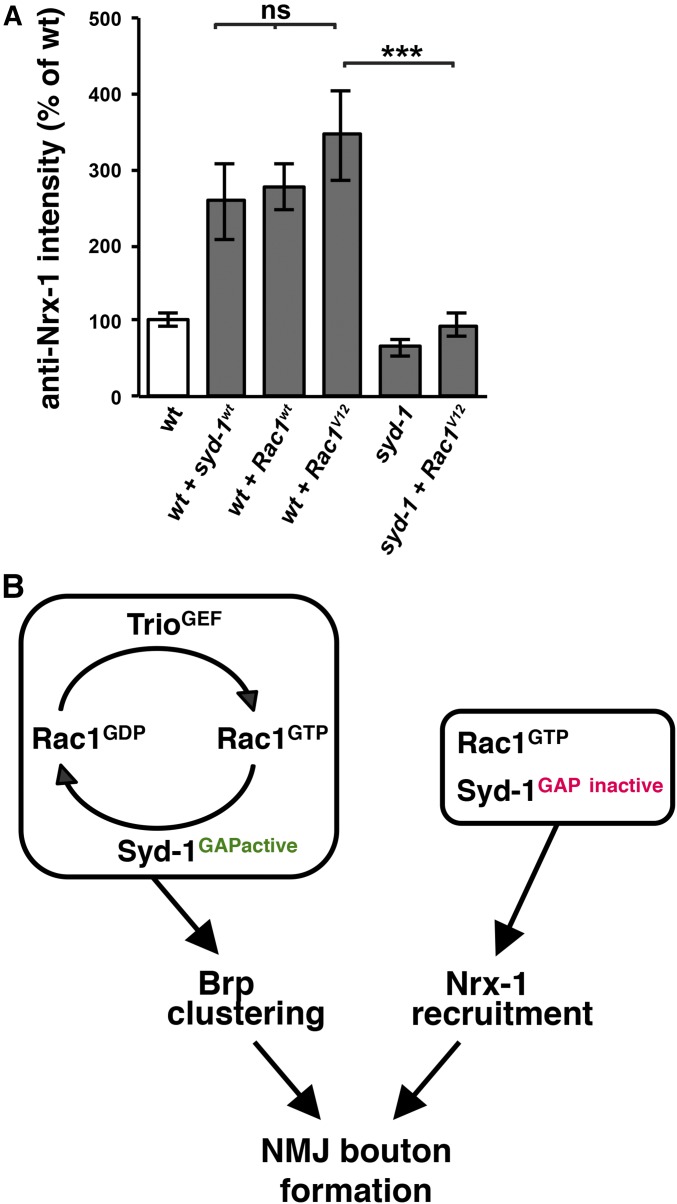Figure 7.
Rac1V12 requires Syd-1 in order to increase Nrx-1 levels at NMJ. (A) Quantification of anti-Nrx-1 staining. Overexpressing either Rac1wt or Rac1V12 in the motorneurons of wild-type animals increases Nrx-1 levels in presynaptic boutons [to 278 ± 31%, n = 14, P = 4.3 × 10−6, or 345 ± 60%, n = 16, P = 4.7 × 10−4, of wild-type levels, respectively (BG380-Gal4 alone: 100 ± 9%, n = 15)]. Loss of syd-1 significantly impairs the ablility of Rac1V12 to increase Nrx-1 levels (94 ± 16%, n = 8, P = 1.2 × 10−4 compared to RacV12 in wild type). Error bars represent SEM. n = animals. ns, not significant; * P < 0.05, ** P < 0.01, *** P < 0.001, based on one-tailed t-tests. (B) Model. Previous work has shown that Syd-1 is required presynaptically for the recruitment of Nrx-1 and clustering of Brp at NMJ, and that each of these processes is required for the formation of a wild-type number of NMJ boutons. In this paper, we provide evidence that Syd-1's GAP activity is required together with the RacGEF Trio to promote proper Brp puncta size by regulating the nucleotide-bound state of Rac1. The similarity between the Brp defects caused by syd-1 or trio loss suggests that Rac1 cycling between GTP- and GDP-bound states is required for normal Brp clustering (see Discussion). By contrast, we find that Syd-1 does not require RacGAP activity to recruit Nrx-1 to boutons and that GTP-bound Rac1 is sufficient for this process but that Rac1 cannot increase Nrx-1 levels in the absence of Syd-1. See Discussion for more details.

